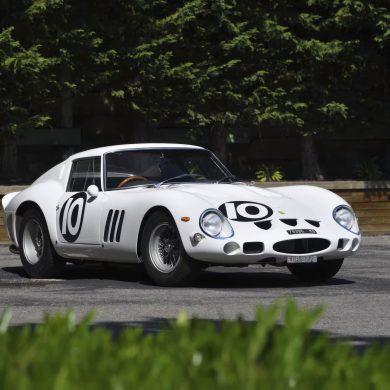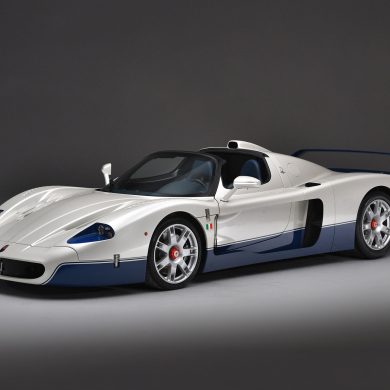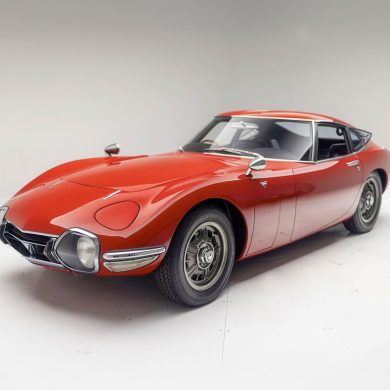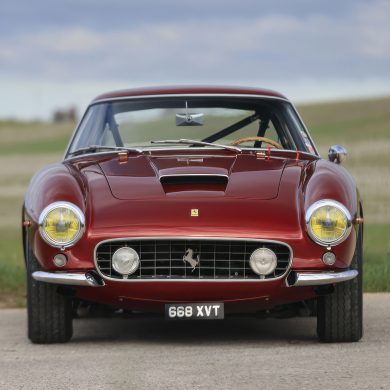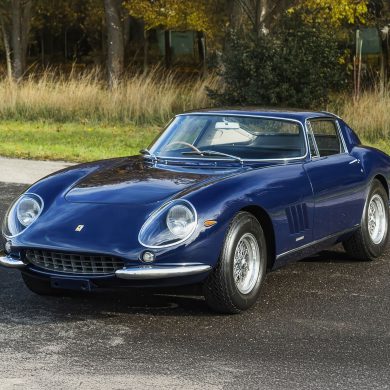
In 1910, the Club conducted the first Gran Premio, the grand prize event that continued for more than four decades, becoming international in 1935. The inaugural event from Buenos Aires to Córdoba was won by a DeDion Bouton, but soon American cars were dominating the series, their ruggedness and low price making them popular with owners and drivers alike. Packard and Hudson were popular racers, but the long-running champion proved to be Studebaker, accumulating up a string of victories through 1925.
Lohigorry Hermanos was the Buenos Aires dealer for Chandler motor cars. Chandler, one of the Cleveland, Ohio, automakers, had been formed in 1913 by a group of former Lozier employees. A sturdy, medium-priced make, Chandler was well regarded, both in the United States and abroad. The inspiration for a Chandler race car came from driver Ermanno Blanchiardi.
Blanchiardi, known as El coloso de los caminos (the giant of the roads), had come to Argentina in 1901 as a bicycle racer. Within a year, however, he quit racing to sell threshing machines, which earned him quite a bit of money. In 1906, he became interested in motor racing, while working for the importer of Italian marques S.P.A. and Lancia. In later years, while employed by a taximeter company, he became more and more involved in the racing scene, and won his first race in 1916 in a Lancia. He joined Lohigorry Hermanos in 1918 as a sales associate.
Blanchiardi felt that publicity gained from racing would be good for Lohigorry Hermanos, for Chandler and also for himself. The Chandler car, however, was not ideal racing material. While robust and well built, it was not particularly powerful. Its engine had identical displacement to Hudson’s renowned Super Six, but it developed nearly 30 percent less power. Lohigorry Hermanos, however, had a Curtiss OX-5 aero engine, one of many hurriedly produced for World War I. Blanchiardi consulted his friend, talented mechanic and fellow driver Miguel Barra, about transplanting the OX-5 into the Chandler.
The Curtiss OX-5 was the first mass-produced aero engine in the United States. The brainchild of aviation pioneer Glenn H. Curtiss, it was an outgrowth of his lightweight motorcycle engines, early units built up by combining V-twins on a single crankshaft. The first V8 came in 1906; by 1908 water cooling was in use and cross-flow cylinders with overhead valves in 1909. The first OX was built for the U.S. Navy in 1912 to power the A-1 amphibian. The OX-5 debuted in 1915, initially in trainers, and it was produced by Curtiss and several licensees through the end of the war. In wartime it powered a host of airplanes, prominent among them Curtiss’s own JN-4 “Jenny.” Afterwards, it became popular in commercial aeronautics, as large quantities of military surplus units were available. Many also found homes in racing boats and automobiles.
It took Blanchiardi and Barra some time to complete their task. One of their challenges was the OX-5’s leisurely gait – its peak of 90 brake horsepower developed at 1,400 rpm. Eventually the pair fabricated an entirely new rear axle with one-to-one gearing. The car made its racing debut on October 13th, 1918 in the Premio Provincia de Buenos Aires, finishing fourth. It achieved its first victory on October 20th at the Belgrano Hippodrome.


Blanchiardi competed with the Chandler-Curtiss until 1923, with considerable success. His 1922 record included one win, one third and one fifth place – and just one DNF. The following year was somewhat less satisfying, with one win in the Premio Automovil Club de la Plata 410-kilometre race at Buenos Aires and one DNF. In the Premio Asoc. Audax Córdoba in that city, the car failed to start. After a single race in the 1924 season, the Copa America, a 200-kilometre event at the Circuito de Moron, Blanchiardi sold the car to Juan A. Malcolm.
Born in Scotland, Malcolm emigrated to Argentina with his family in 1900. He began racing in his teens, in a four-cylinder Dodge Urbane. Well spoken, he acquired a habit of wearing a scarf around his neck and became known as El Gaucho Esconcés (The Scottish Gaucho), also El Ingles (The English). His success was erratic (“the bad luck of the beginner” he called it), so in 1918 he went to Europe and spent five years working for Bugatti. During his time with Le Patron he purchased a Bugatti and raced it on a number of European courses.
Malcolm traded in a Hudson as the majority of the purchase price of the Chandler-Curtiss. In April 1924, a month after purchasing the car, he won the Premio Automovil Club Argentino 400-kilometre event at Circuito Otoño. He achieved two more wins and one DNF that season. By this time, however, more powerful cars were entering the Argentine racing scene. High performance European cars like Bugatti, Delage, Maserati and Alfa Romeo began to dominate the circuits. Malcolm put the Chandler-Curtiss into a corner of his workshop where, in time, it became hidden and forgotten.
Unearthed a number of years ago, the Chandler-Curtiss was sold from Argentina to Europe. Sympathetically restored in its home country, it retains many of the scars and stresses of its competition life, complemented by a rich patina that restoration has not erased.


Eligible for a wide variety of vintage events, the Chandler-Curtiss will certainly prove an enjoyable and spirited participant. Many other surviving racing cars may offer similar thrills, but the appeal of the Chandler-Curtiss is more visceral. It provides an almost tangible connection with the past, to a time when larger than life men did battle against overwhelming odds and at great personal risk – a time of villains and heroes, a time when history was yet to be written.
The Chandler-Curtiss Racing Car has a 90 hp, 503 cu. in. overhead valve V8 Curtiss aero engine, three-speed manual transmission, solid front axle and live rear axle with semi-elliptic leaf springs, two-wheel mechanical brakes and a 123″ wheelbase.
The Chandler-Curtiss will be auctioned off at the RM Auctions Automobiles of London event that will be held at Battersea Evolution, Battersea Park, London UK on October 29th, 2008. The pre-auction estimate is £200,000 – £250,000.
A full day preview will be held on October 28th from 11am to 5:30pm. Doors open on October 29th at 10am, with all the auction action getting underway from 4pm. Admission to the event is by catalogue only, which is available for £50 and admits two.
For more information, contact RM Auctions’ London Office at +44 (0) 207 293 6336 or visit www.rmauctions.com.
[Source: RM Auctions]


